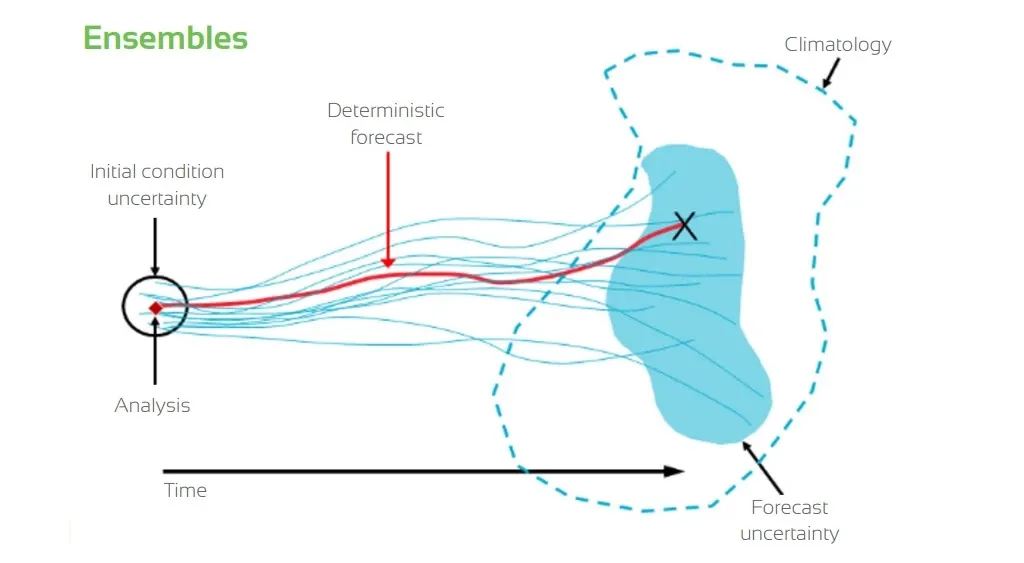Weather is the state of the atmosphere with regards to wind, temperature, cloudiness, moisture, and pressure. Weather forecasting is the application of science to model, and thus predict, future conditions within the atmospheric system. From shorter term impacts of sudden temperature changes to mild winters leaving gas storage near full, weather is a consistent driver along the full spectrum of energy markets and contracts.
Weather Forecasting
Data for use in weather forecasting models is collected globally by ocean buoys, planes, ships, satellites, weather balloons, radar and various land-based measurement techniques. Weather is the result of processes taking place in the atmosphere and oceans, and thus is governed by the laws of fluid dynamics. Weather forecasting models take these principles, along with data collected, and apply hundreds, or even thousands, of variables to produce numerous potential outcomes, known an ensembles.
Weather is a chaotic system meaning small initial inaccuracies grow rapidly and seriously impact predictability. The range in ensembles increases with time, meaning ensembles for short term forecasts will fall within a smaller range than those for longer term forecasts (Fig 1).










